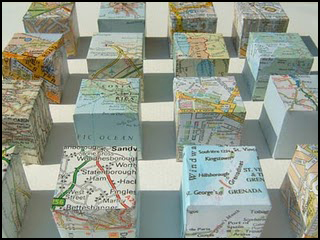 I’ve been reading up on the latest methods of location determination (LD for those that love acronyms) and I have to say that if mobile is going to get to the level of detail it needs to be, we’re going to have to employ better methods (and maybe technologies) that allow the users precision. I’ll list out the three methods I’m aware of and their strengths/weaknesses.
I’ve been reading up on the latest methods of location determination (LD for those that love acronyms) and I have to say that if mobile is going to get to the level of detail it needs to be, we’re going to have to employ better methods (and maybe technologies) that allow the users precision. I’ll list out the three methods I’m aware of and their strengths/weaknesses.
- GPS – This is the one that everyone is familiar with and is an excellent method of determining location; as long as your standing in the middle of a field. The issue with this technology is that it doesn’t do well in downtown areas with skyscrapers and does not work at all when you’re inside a building.
- Cell-ID – This was supposed to be the savior a number of years ago but failed to be adopted.
- WiFi Positioning (WFP) – With the proliferation of WiFi, many feel that this will be a good way to help locate people/products with some precision. I will admit that there is some opportunity with this method through triangulation and yet we are a long way from having all business locations embrace WiFi.
Why is precise location determination (PLD; haha ) so important? Well, let me describe a scenario where it would be essential.
I’m out Christmas shopping and I’m looking for a book entitled The Experience Economy. This book has been out for over 10 years and I’m not sure what book stores will have it. Instead of calling my local book stores to see if they have it, I search for the book on my iPhone map application. The search results return the red pegs on top of the stores the book is currently in. (Let’s ignore the inventory question for now.) I then zoom in and it shows me what section of the building the book is in and tells me what floor.
Now, if you read the bulleted list above you understand that this level of detail isn’t possible yet. The most likely is a hybrid of services with cell and WiFi getting us closest to the exact location. Until then how might businesses get to this level of detail?
- RFID is one method that would allow for customers to know the exact location of a product. This answers the location and inventory question in one. The issues are cost to the business and consumer behavior.
- User generated marker. I posted about conduit marketing some time ago and the idea is to have users place digital markers on products they want to share with their friends. (Nothing you can do if the product changes location between the time the marker was placed and the time the user get’s to the store.) The issue is that not every product will be recommended so the exact location will not be found.
Some would say this type of precision is not needed, but I believe it is. Think of the craptacular experience online search can be. Yet another scenario:
Company A does not have it’s site optimized (rhymes with Nike) and when a user searches for a product on Google, they are taken to the company’s site where they get to search for it again. Not a great experience.
The same thing can be said of searching for a product in the real world. Don’t just tell me that the book is in the store. That’s not enough. I then have to go and find the section or worse yet; ask someone for directions. (Men aren’t the only ones that hate this. Trust me.)Â A person should (will) be able to search for specific meals in restaurants like shrimp enchiladas (can you tell it’s close to lunch) or products that meet certain requirements: red shirt, long sleeves, no front pocket and have their mobile device tell them exactly where that item is. Today it’s location but tomorrow, it will be product.
Hello, I read all your posts, keep them coming.
I was looking through some of your articles on this internet
site and I think this web site is rattling instructive!
Retain putting up.Raise range